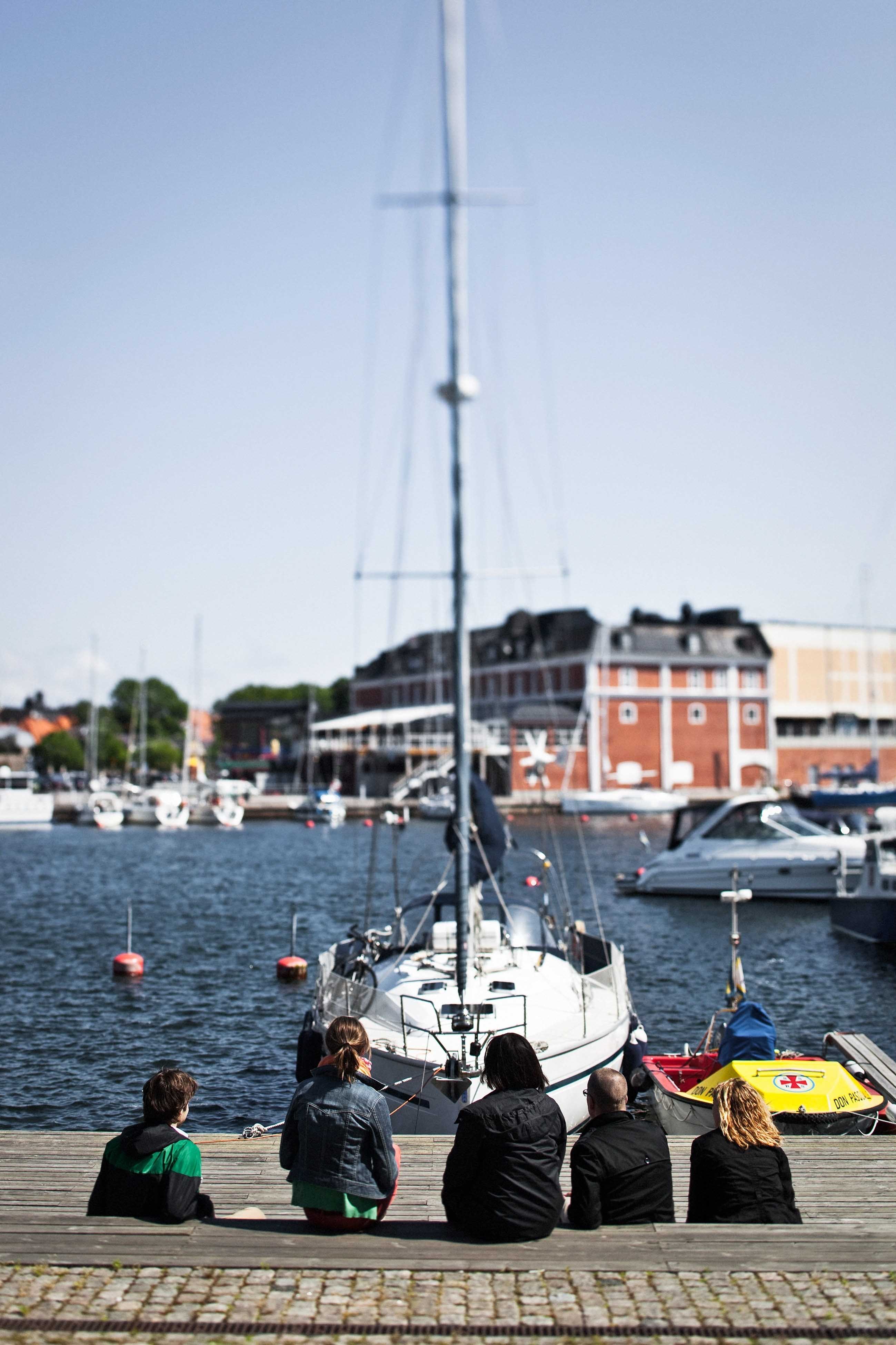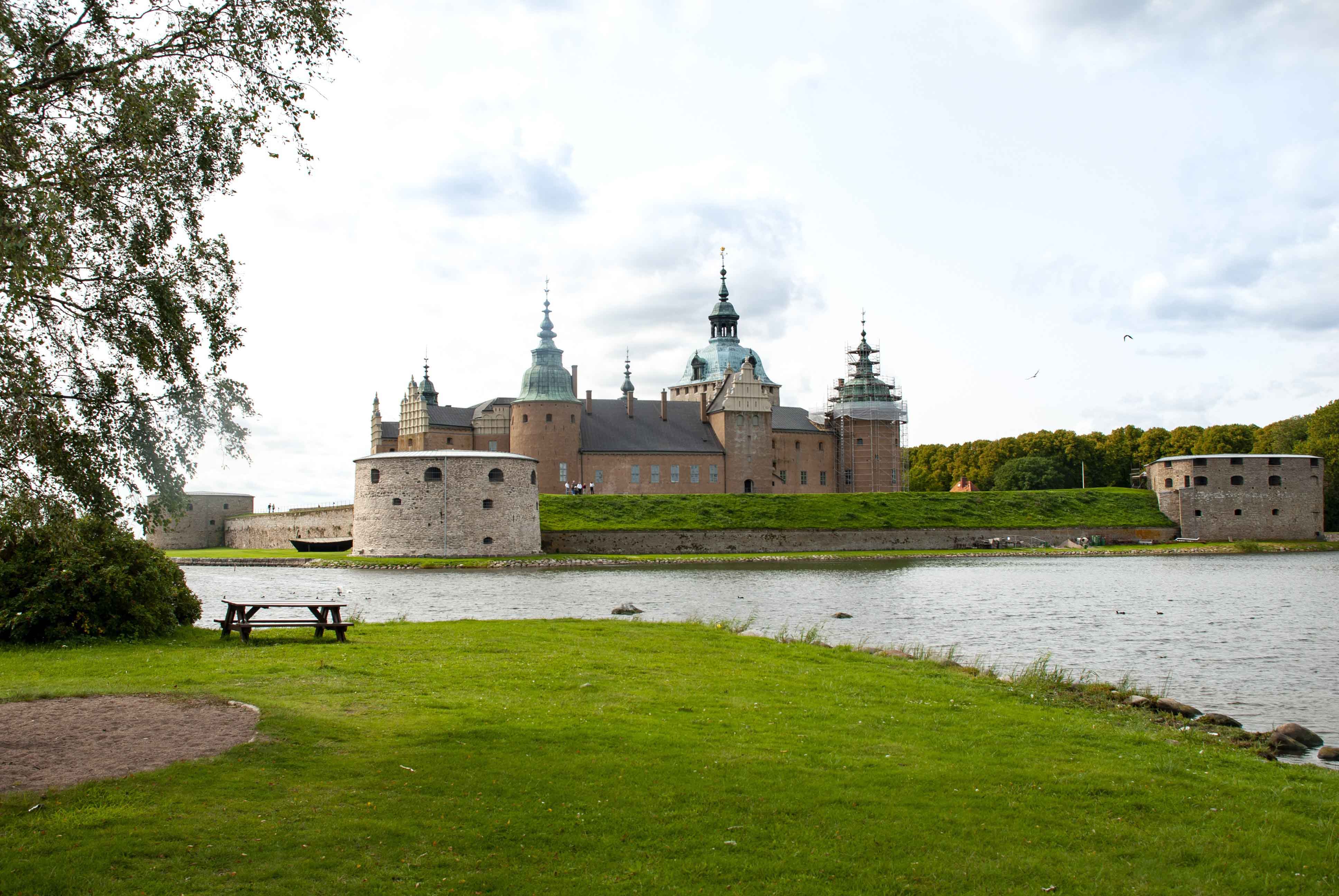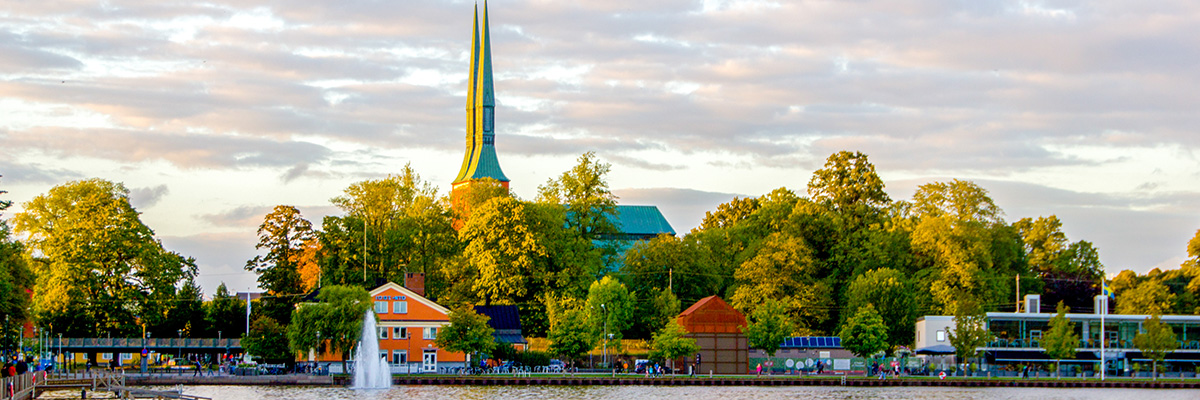About the Växjö / Kalmar, Sweden program
The Växjö/Kalmar program is a USAC partnership program. Learn more about on-site program elements and the city itself below.
About Växjö

- Distance from Oslo: 256 miles
- Distance from Copenhagen: 120 miles
Växjö is the capital of the Kronoberg region in southeastern Sweden. It was an important trading center as early as the eighth century, and is situated in the heart of the “Kingdom of Crystal,” named after the region’s world-famous glassworks, such as Kosta Boda and Orrefors. Växjö is also known for its high-tech industry and furniture manufacturing. It boasts a long history of commitment to sustainability and environmental issues, earning the title of the “Greenest City in Europe.”
The area surrounding Växjö consists of forests, pristine lakes, hiking trails, and unspoiled countryside, making it an attractive area for those who love the outdoors. The city also boasts a rich cultural life, as well as an active nightlife. You can visit beautiful medieval churches and historic castle ruins, attend music performances in a modern concert hall, taste a variety of cuisines at cafés and restaurants, and visit several museums located across the city. One of the most famous is the Swedish Emigrant Institute, which commemorates the great emigration from 1850 to 1930 when 1.3 million Swedes immigrated to the U.S.
About Kalmar

- Distance from Oslo: 370 miles
- Distance from Växjö: 75 miles
The Kalmar campus is located 75 miles east of Växjö on Sweden’s Baltic Coast, opposite the island of Öland. The city of Kalmar was one of Sweden’s most important cities between the thirteenth and seventeenth centuries and still has a magnificent, well-preserved Renaissance castle. Its medieval city center is quite picturesque, with cobblestone streets surrounded by a series of canals. Local attractions include a cathedral, Kalmar castle, museums, restaurants and cafés, and gardens, as well as beaches and scenic coastlines. The city is home to Europe’s largest dinosaur exhibition, with more than 200 fossils on display. Kalmar and its surrounding areas also have a long tradition of high-quality craftsmanship in textiles, ceramics, glass, and furniture.
Both locations offer excellent opportunities for outdoor recreation, including hiking, biking, camping, canoeing, fishing, kayaking, skiing, and more.

